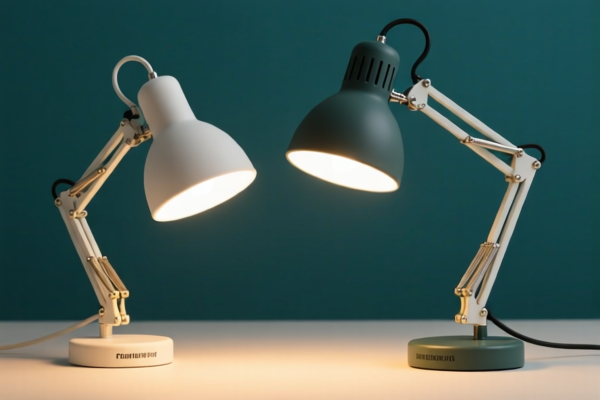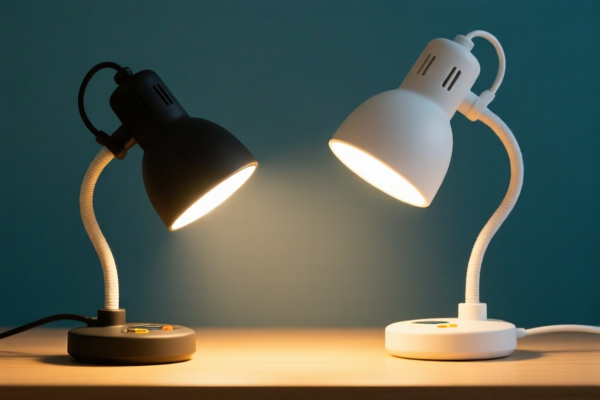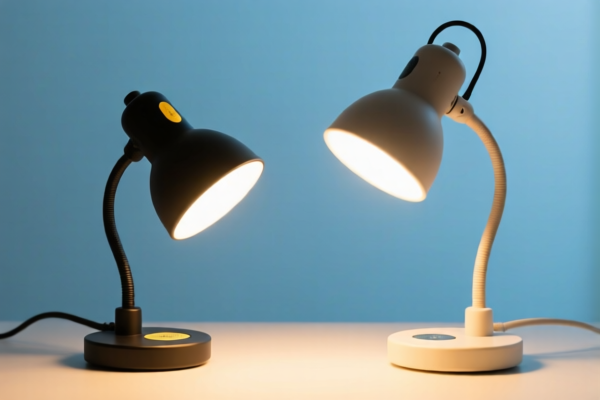| HS Code | Official Doc | Tariff Rate | Origin | Destination | Effective Date |
|---|---|---|---|---|---|
| 8512102000 | Doc | 37.5% | CN | US | 2025-05-12 |
| 8512104000 | Doc | 40.2% | CN | US | 2025-05-12 |
| 8539293020 | Doc | 37.5% | CN | US | 2025-05-12 |
| 8539520091 | Doc | 32.0% | CN | US | 2025-05-12 |
| 9405416000 | Doc | 61.0% | CN | US | 2025-05-12 |
| 9405418410 | Doc | 58.9% | CN | US | 2025-05-12 |




Flashing Light
A flashing light is a light source that switches on and off rapidly, creating a perceived intermittent illumination. The rate of flashing, color, and intensity vary significantly depending on the application.
Material & Technology
The core technology behind a flashing light depends on the era and intended use. Historically, incandescent bulbs were used with mechanical or electrical switching systems. Modern flashing lights commonly employ:
- Incandescent Bulbs: Still used in some applications, often with a simple relay to cycle power.
- LEDs (Light Emitting Diodes): Predominant in current designs due to their energy efficiency, long lifespan, and ability to be rapidly switched on and off. LEDs are often controlled by electronic circuits.
- Xenon Strobe Tubes: Used in high-intensity applications requiring very bright, short bursts of light (e.g., photographic flashes, emergency beacons).
- Halogen Bulbs: Less common now, but still found in some older signaling devices.
The housing materials vary widely, including plastics (polycarbonate, ABS), metals (aluminum, stainless steel), and glass, depending on the environment and durability requirements.
Purpose
Flashing lights serve a multitude of purposes, primarily focused on signaling and attracting attention:
- Warning: Alerting to potential hazards (e.g., construction zones, emergency vehicles, malfunctioning equipment).
- Communication: Conveying coded messages (e.g., Morse code, aviation signals).
- Attention-Getting: Drawing focus to specific locations or objects (e.g., nightclubs, promotional displays).
- Safety: Increasing visibility in low-light conditions (e.g., bicycle lights, safety vests).
- Decorative: Creating visual effects (e.g., stage lighting, holiday decorations).
Function
The basic function is to interrupt the continuous emission of light. This is achieved through:
- Mechanical Switching: Physically breaking and restoring the electrical circuit.
- Electronic Control: Rapidly turning the power supply on and off to the light source via transistors, integrated circuits, or microcontrollers.
- Pulse Modulation: Controlling the duration and frequency of the light pulses to create different flashing patterns.
The flashing rate (measured in flashes per minute - FPM) is a critical parameter, often standardized for specific applications.
Usage Scenarios
- Emergency Services: Ambulances, police cars, fire trucks use synchronized flashing lights and beacons for visibility and to signal priority.
- Construction & Road Work: Warning lights on barriers, cones, and vehicles to alert drivers to hazards.
- Aviation: Aircraft use flashing lights for identification, navigation, and signaling. Airport beacons are critical for visibility.
- Marine Navigation: Lighthouses and buoys use distinct flashing patterns to identify their location and warn ships of hazards.
- Personal Safety: Bicycle lights, reflective vests with flashing LEDs, and personal emergency beacons.
- Entertainment: Stage lighting, nightclubs, concerts, and special effects.
- Photography: Electronic flashes to provide illumination for capturing images.
- Industrial Signaling: Machine status indicators, warning signals in hazardous environments.
Common Types
- LED Strobe Lights: Energy-efficient, long-lasting, and available in various colors and patterns.
- Xenon Strobe Lights: High-intensity, short-duration flashes, often used in photography and emergency beacons.
- Rotating Beacon Lights: Employ rotating mirrors or lenses to create a sweeping beam of light.
- Morse Code Lights: Used for communication, employing a standardized pattern of short and long flashes.
- Barrier Lights: Typically red or amber LEDs mounted on barriers or cones for construction zones.
- Aircraft Warning Lights: Red or white lights used to warn aircraft of obstacles.
- Marine Beacon Lights: Distinct flashing patterns to identify specific locations.
- Emergency Vehicle Lights: Synchronized flashing lights in red, blue, and amber.
Based on the provided information, “flashing light” can be categorized as follows:
- 8512.10.20.00: Electrical lighting or signaling equipment (excluding articles of heading 8539), windshield wipers, defrosters and demisters, of a kind used for cycles or motor vehicles; parts thereof: Lighting or visual signaling equipment of a kind used on bicycles: Lighting equipment. This code covers lighting equipment used on bicycles, which could include flashing lights. The total tax rate is 37.5% (Base tariff: 0.0%, Additional tariff: 7.5%, Post-April 2, 2025, additional tariff: 30.0%).
- 8512.10.40.00: Electrical lighting or signaling equipment (excluding articles of heading 8539), windshield wipers, defrosters and demisters, of a kind used for cycles or motor vehicles; parts thereof: Lighting or visual signaling equipment of a kind used on bicycles: Visual signaling equipment. This code specifically covers visual signaling equipment for bicycles, which includes flashing lights. The total tax rate is 40.2% (Base tariff: 2.7%, Additional tariff: 7.5%, Post-April 2, 2025, additional tariff: 30.0%).
- 8539.29.30.20: Electrical filament or discharge lamps, including sealed beam lamp units and ultraviolet or infrared lamps; arc lamps; light-emitting diode (LED) light sources; parts thereof: Other filament lamps, excluding ultraviolet or infrared lamps: Other: Designed for a voltage not exceeding 100 V: Other Flashlight lamps. This code covers flashlight lamps designed for a voltage not exceeding 100V, which could include flashing lights. The total tax rate is 37.5% (Base tariff: 0.0%, Additional tariff: 7.5%, Post-April 2, 2025, additional tariff: 30.0%).
- 8539.52.00.91: Electrical filament or discharge lamps, including sealed beam lamp units and ultraviolet or infrared lamps; arc lamps; light-emitting diode (LED) light sources; parts thereof: Light-emitting diode (LED) light sources: Light-emitting diode (LED) lamps Other. This code covers other LED lamps, which could include flashing lights. The total tax rate is 32.0% (Base tariff: 2.0%, Additional tariff: 0.0%, Post-April 2, 2025, additional tariff: 30.0%).
HS Code Structure Explanation:
- Chapter 85: Electrical machinery and equipment.
- Heading 12 & 39: Specifically covers lighting equipment, signaling equipment, and lamps.
- Subheading .10, .20, .30, .52 & .91: Further defines the type of lighting equipment, lamps, and their voltage or specific use cases (e.g., for bicycles, LED lamps, flashlight lamps).
Important Note:
The applicable tax rate for codes 8512.10.20.00, 8512.10.40.00 and 8539.29.30.20 will change to 37.5% after April 2, 2025, due to the additional tariff increase. The applicable tax rate for code 8539.52.00.91 will change to 32.0% after April 2, 2025, due to the additional tariff increase.
Customer Reviews
No reviews yet.